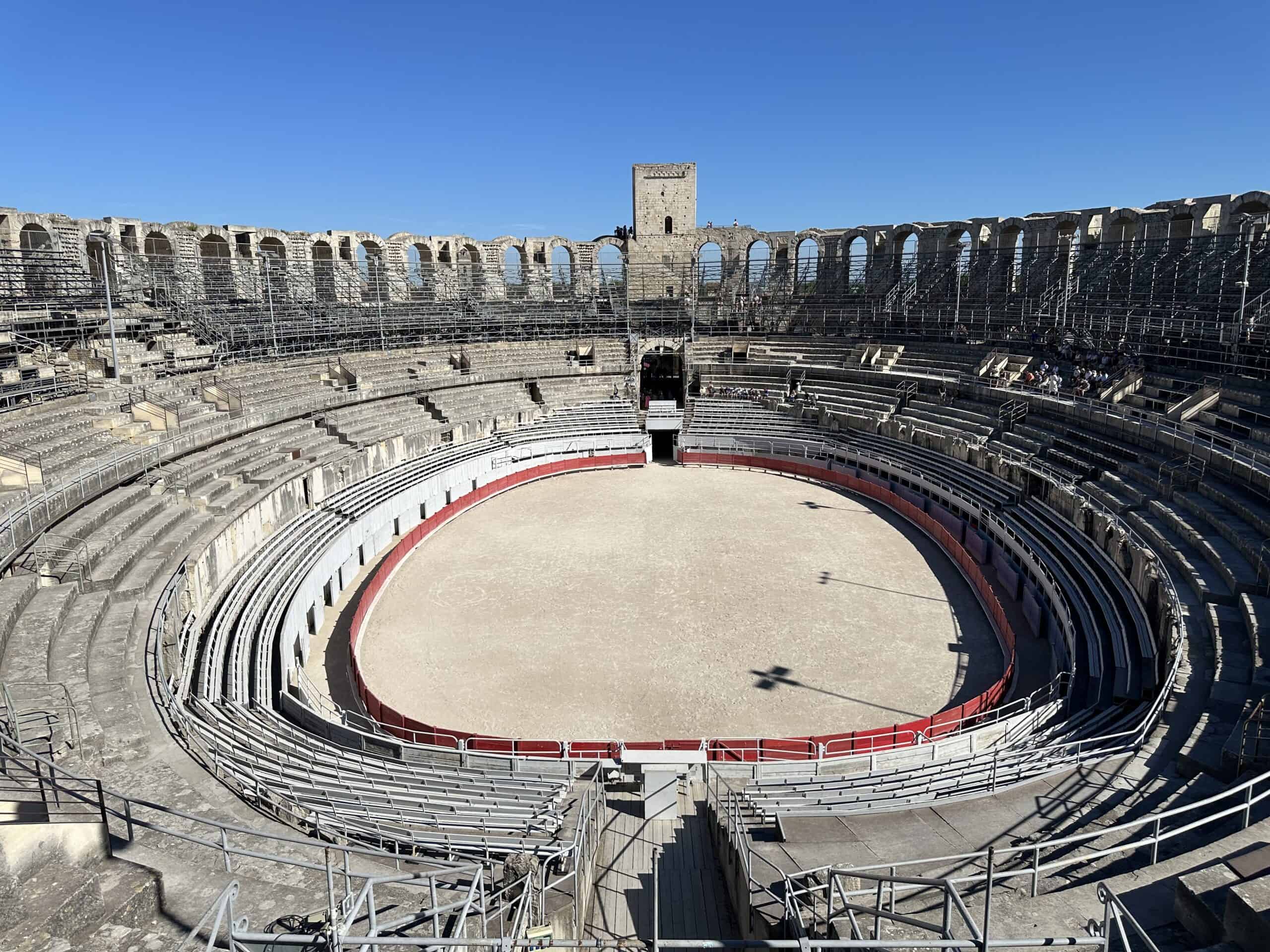
The Roman amphitheater in Arles was built in 90 AD and was one of the largest in Gaul.
The structure consists of two orders of 60 arches separated by Doric columns on the first level and Corinthian columns on the second.
The amphitheater measures 135 meters long and almost 110 meters wide.
At the time of the Roman Empire, chariot races and gladiator fights took place here.
In the Middle Ages the amphitheater fell into disuse. About two hundred houses were built inside while the perimeter was equipped with four towers, so much so that it appeared as a fortified citadel.
In 1825 the amphitheater began to be emptied of houses to become a National Historic Monument.
In 1981 the amphitheater was declared a World Heritage Site by UNESCO along with other Roman and Romanesque buildings in Arles.
Today it has become the city place dedicated to concerts, shows and even bullfights.
There are two different types of bullfights scheduled in the amphitheater: the bullfights where the bull is not killed and the fight is only symbolic and the bullfights, in classical Spanish style.











